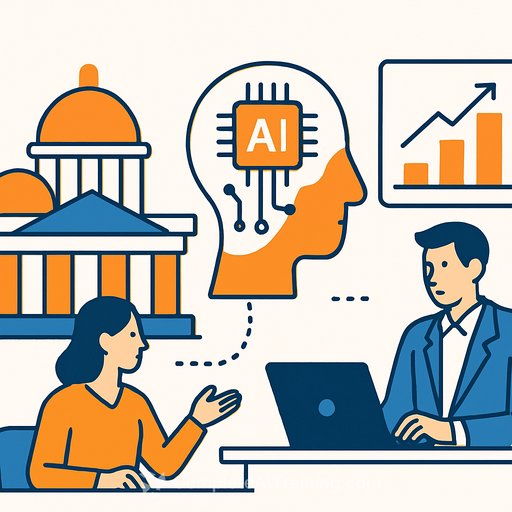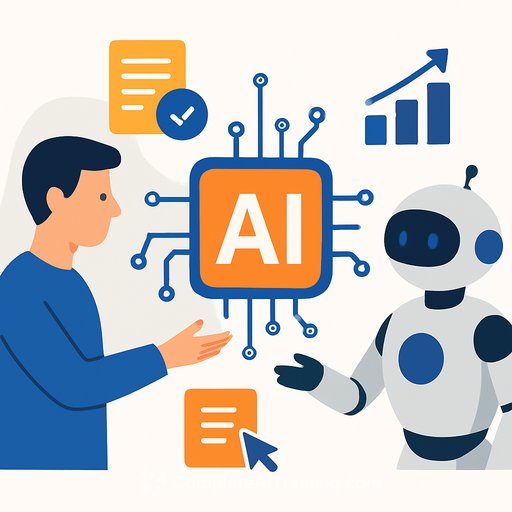AI in Government: From Pilot to Proven Value
AI's opportunity in government is broad: anticipating problems before they escalate, using digital twins to model infrastructure changes, and creating an always-on front door for services. Yet value is not automatic. Efficiency gains are table stakes. The real work is deciding how freed-up time is redeployed and how to evidence better outcomes for citizens.
Where AI is already working
There are at least 74 AI use cases live across government. Several have moved the needle on real outcomes.
- Prevention: One council used AI to predict and prevent homelessness, improving outcomes by 27% versus the standard non-tech approach.
- Health: A hospital flagged patients at higher risk of hospitalisation within a year; proactive, holistic assessments followed. During a care home trial, A&E visits dropped by 60%.
- Access to services: A council's multilingual voice assistant cut peak-time transfers to human agents by 84%, handled over half of calls end-to-end, and delivered about £7.5m in savings.
- Workforce support: Using Copilot to record and transcribe social care conversations removed the need for note-taking and improved the dialogue. Other trials, however, showed outputs needing rework, reducing time savings.
The lesson: AI can help, but benefits vary by context and execution.
The trap: "productivity theatre" and pilots that stall
Some initiatives create the illusion of getting more done without measurable impact. Only about 8% of AI projects show clear benefits. Many pilots don't scale because they prove technical feasibility, not business value, and momentum fades past early enthusiasts.
Meanwhile, just 21% of public sector bodies had an AI strategy as of late 2023. Without a strategy, pilots drift, measurement is weak, and adoption stalls.
Get the foundations right
Skills, data, and systems decide whether AI sticks. Skills are the top barrier cited by 70% of respondents. Data is fragmented-70% of departments say their landscape isn't interoperable or single-source-of-truth. As Gareth Davies MP put it: "Poor data means arriving at wrong answers, only faster."
Legacy "Cinderella systems" lack modern APIs, trap data, and can carry security issues that block cloud adoption. Fixing this isn't glamorous, but it determines whether AI can plug into real workflows and be trusted.
How to start and make progress
- Study what works in other sectors; translate, don't copy-paste.
- Start small, think big: pilot a tight use case with a clear path to scale.
- Build on flexible platforms that can absorb rapid change.
- Modernise procurement: consider open frameworks over long lock-ins.
- Engage stakeholders early and often; ship what people will actually use.
- Build trust: AI tools can "please" and make things up. Train users to prompt well and verify critical outputs.
- Measure what matters: beyond time and cost, track citizen outcomes and service quality.
- Pivot or stop quickly if value isn't showing.
- Create networks to share lessons and scale success.
What to measure (so you can scale)
Pick metrics tied to service outcomes, not just activity. Examples: fewer crisis interventions, reduced A&E visits, shorter time-to-benefit decisions, higher first-contact resolution, lower complaint rates, and improved staff capacity for complex cases. Use control groups and pre/post baselines. If you can't measure it, don't scale it.
Priority areas worth piloting
- Proactive social care and public health: risk stratification and early support.
- Digital front doors: multilingual assistants for predictable queries and triage.
- Planning and infrastructure: digital twins to test policy changes before rollout.
- Back-office accelerators: summarisation, drafting, and case triage with human oversight.
Each should include process redesign, skills development, and data improvement from day one. Technology alone won't fix broken workflows.
Recommended resources
Next steps for your team
Identify one high-friction service with clear demand and measurable outcomes. Map the workflow, clean the data you need, train a small group, and pilot with guardrails. Share learning widely, harden the model and process, then scale. Repeat.
Opportunities to learn and upskill
If your priority is workforce capability, explore role-based AI learning paths here: AI courses by job.
Join the conversation
There are open AI bootcamps facilitating frank discussion about aims, blockers, and practical support. To register, email: bettergovernment@capita.com
Your membership also unlocks:






